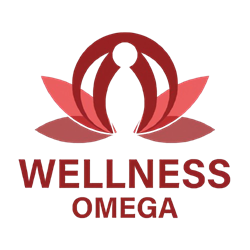Rosacea is a chronic skin condition that primarily affects the facial area, often leading to discomfort and emotional distress for those affected. Characterized by redness, inflammation, and various skin changes, rosacea can present in several forms, each with its specific set of symptoms and triggers. This article delves into the different types of rosacea, the associated symptoms, potential triggers, and addresses some frequently asked questions about the condition.
Types of Rosacea
Rosacea has four primary subtypes, each distinguished by unique signs and symptoms:
1. Erythematotelangiectatic Rosacea (ETR)
The first subtype is characterized primarily by facial redness (erythema) and visible blood vessels (telangiectasia). Individuals may experience a burning or stinging sensation, and the skin can feel itchy or dry. This subtype serves as an early indicator of rosacea and can often be mistaken for sunburn or simply sensitive skin.
2. Papulopustular Rosacea
This subtype manifests with a combination of redness and bumps resembling acne or pimples. It affects areas like the cheeks, forehead, and chin, leading to a puffy appearance. Unlike acne, papulopustular rosacea does not usually present blackheads but can be quite uncomfortable due to the inflammation.
3. Phymatous Rosacea
Phymatous rosacea is characterized by the thickening of facial skin and often leads to a disfiguring condition, particularly on the nose, known as rhinophyma. This subtype is more common in men and usually develops over time. The skin may appear bumpy and swollen, with a rough texture that can be distressing for those affected.
4. Ocular Rosacea
This subtype affects the eyes and eyelids, manifesting as redness, irritation, and dryness. Symptoms may include a sensation of grittiness or burning in the eyes. If left untreated, ocular rosacea can lead to complications such as corneal damage, making it crucial for those experiencing symptoms to seek medical attention.
Symptoms of Rosacea
The symptoms of rosacea can vary widely among individuals, often changing in intensity and character over time. Here are some common symptoms associated with the different subtypes:
- Flushing: A temporary redness of the face that can be accompanied by feelings of warmth.
- Persistent Redness: Unlike temporary flushing, this is a more long-lasting redness that often appears symmetrically on the face.
- Visible Blood Vessels: Small, dilated blood vessels can surface, leading to a pronounced appearance on the skin.
- Bumps and Pimples: Red, inflamed lesions can develop, giving the skin a bumpy texture.
- Thickened Skin: In cases of phymatous rosacea, the skin may become noticeably thicker and develop a bumpy texture.
- Eye Irritation: Ocular symptoms can include dryness, redness, and blurry vision, significantly affecting quality of life.
Triggers of Rosacea
Identifying and managing triggers is essential for controlling rosacea symptoms. Triggers can vary from person to person but commonly include:
1. Temperature Changes
Extreme temperatures, either hot or cold, can exacerbate rosacea symptoms. Hot weather, humidity, and sudden changes in temperature can lead to flare-ups, as can exposure to the elements.
2. Sun Exposure
UV rays can worsen redness and inflammation, making sun protection a critical component of managing rosacea. Sunscreen should be broad-spectrum, with an SPF of at least 30, to shield the skin effectively.
3. Food and Beverages
Certain foods and drinks, particularly those that are spicy, hot, or alcoholic, can trigger flare-ups. Common culprits include:
- Hot drinks (like tea and coffee)
- Alcohol, especially red wine
- Spicy foods
Keeping a food diary can help individuals identify specific dietary triggers.
4. Skincare Products
For some, using harsh skincare products or those with fragrances can aggravate symptoms. It’s advisable to choose gentle, fragrance-free products designed for sensitive skin, and to patch-test new products before full use.
5. Stress
Emotional stress can lead to heating of the skin, triggering flushing and worsening rosacea symptoms. Mindfulness and stress management strategies can be beneficial for those affected.
6. Physical Exercise
While exercise is beneficial for overall health, intense workouts may lead to flushing and redness in some individuals. Opting for moderate activities or exercising in cooler environments can help mitigate this effect.
Management Strategies
While there is no cure for rosacea, various management strategies can help control symptoms:
1. Medical Treatments
Topical medications such as metronidazole or azelaic acid are commonly prescribed to reduce inflammation and redness. In some cases, oral antibiotics may be used for more severe manifestations.
2. Lifestyle Modifications
Identifying individual triggers and making lifestyle changes to minimize exposure can significantly impact flare-ups. A skincare routine centered around the use of gentle products designed for sensitive skin can also help.
3. Dietary Changes
Adopting a balanced diet and maintaining a food diary to track triggers may also provide benefits. Staying hydrated and focusing on anti-inflammatory foods can support skin health.
4. Sun Protection
Applying sunscreen daily is critical for preventing sun-induced flare-ups. Physical sunblocks containing zinc oxide or titanium dioxide can provide excellent protection while being gentle on sensitive skin.
5. Stress Management
Incorporating stress-reduction techniques such as yoga, meditation, or deep-breathing exercises into daily routines can help manage both physical symptoms and emotional responses to the condition.
FAQs About Rosacea
1. Is rosacea contagious?
No, rosacea is not contagious. It is a chronic skin condition with no known infectious cause.
2. At what age does rosacea typically develop?
Rosacea can develop at any age, but it most commonly affects adults between the ages of 30 and 60.
3. Can rosacea be mistaken for acne?
Yes, especially in the papulopustular subtype, which can resemble acne. However, rosacea does not typically present with blackheads, which are a hallmark of acne.
4. Is there a cure for rosacea?
There is currently no cure for rosacea, but it can be effectively managed with a combination of treatments and lifestyle modifications.
5. Are there any home remedies for rosacea?
Some individuals find relief using natural remedies such as chamomile, green tea, or aloe vera, but it’s essential to patch-test any new treatment to avoid irritation.
6. Should I see a dermatologist for rosacea?
Yes, seeing a dermatologist is advisable for a proper diagnosis and tailored treatment plan, particularly if symptoms are severe or worsening.
7. Can rosacea affect self-esteem?
Many individuals with rosacea experience negative impacts on their self-esteem and quality of life due to the visible nature of the condition. Psychological support or counseling can be beneficial.
Conclusion
Understanding rosacea is a crucial step for those affected, their loved ones, and healthcare providers. By recognizing the different types, symptoms, and triggers of this chronic skin condition, individuals can better manage their symptoms and improve their quality of life. With an effective treatment plan in place and appropriate lifestyle modifications, it is possible to keep rosacea under control, allowing individuals to lead a fulfilling life. If you or someone you know is dealing with rosacea, don’t hesitate to consult a healthcare professional to explore effective options for management and care.

